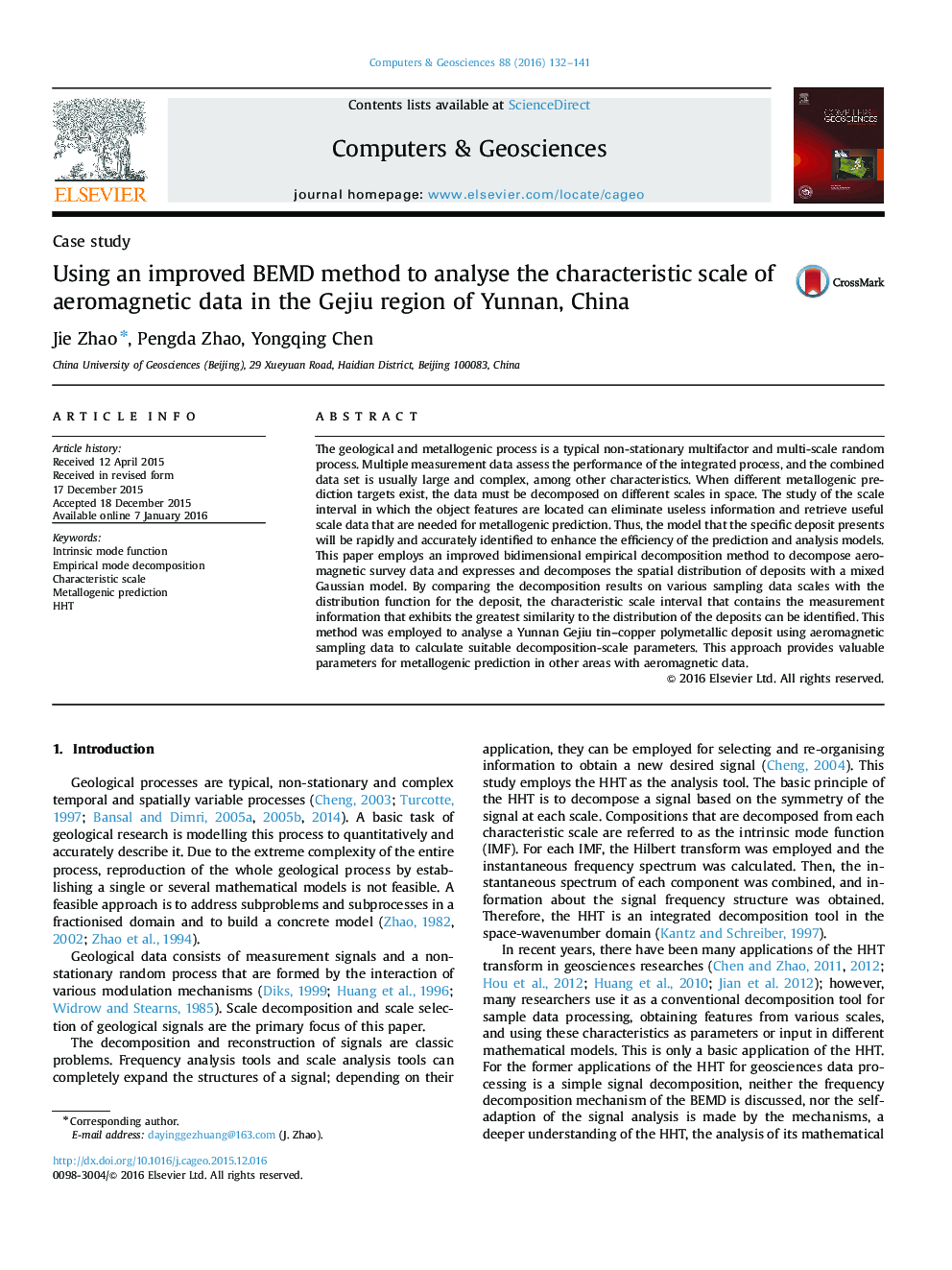| Article ID | Journal | Published Year | Pages | File Type |
|---|---|---|---|---|
| 507108 | Computers & Geosciences | 2016 | 10 Pages |
•A self-adaptive HHT decomposition method and a dynamic adjustment stop condition are proposed.•A novel framework is presented for the purpose of filtering out useful components of a signal within frequency domain contrasting with certain sample data.•For the first time, the characteristic scale of HHT decomposition is proposed, which can be used to recongize and segment different porcesses from the sophiscated and mixed sample data in a large area in which multi geophysical models work together.
The geological and metallogenic process is a typical non-stationary multifactor and multi-scale random process. Multiple measurement data assess the performance of the integrated process, and the combined data set is usually large and complex, among other characteristics. When different metallogenic prediction targets exist, the data must be decomposed on different scales in space. The study of the scale interval in which the object features are located can eliminate useless information and retrieve useful scale data that are needed for metallogenic prediction. Thus, the model that the specific deposit presents will be rapidly and accurately identified to enhance the efficiency of the prediction and analysis models. This paper employs an improved bidimensional empirical decomposition method to decompose aeromagnetic survey data and expresses and decomposes the spatial distribution of deposits with a mixed Gaussian model. By comparing the decomposition results on various sampling data scales with the distribution function for the deposit, the characteristic scale interval that contains the measurement information that exhibits the greatest similarity to the distribution of the deposits can be identified. This method was employed to analyse a Yunnan Gejiu tin–copper polymetallic deposit using aeromagnetic sampling data to calculate suitable decomposition-scale parameters. This approach provides valuable parameters for metallogenic prediction in other areas with aeromagnetic data.
